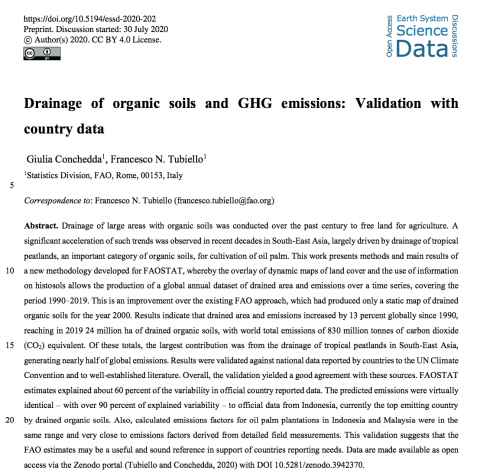Drainage of organic soils and GHG emissions: Validation with country data

Document Summary:
Drainage of large areas with organic soils was conducted over the past century to free land for agriculture. A significant acceleration of such trends was observed in recent decades in South-East Asia, largely driven by drainage of tropical peatlands, an important category of organic soils, for cultivation of oil palm. This work presents methods and main results of a new methodology developed for FAOSTAT, whereby the overlay of dynamic maps of land cover and the use of information on histosols allows the production of a global annual dataset of drained area and emissions over a time series, covering the period 1990–2019. This is an improvement over the existing FAO approach, which had produced only a static map of drained organic soils for the year 2000. Results indicate that drained area and emissions increased by 13 percent globally since 1990, reaching in 2019 24 million ha of drained organic soils, with world total emissions of 830 million tonnes of carbon dioxide (CO2) equivalent. Of these totals, the largest contribution was from the drainage of tropical peatlands in South-East Asia, generating nearly half of global emissions. Results were validated against national data reported by countries to the UN Climate Convention and to well-established literature. Overall, the validation yielded a good agreement with these sources. FAOSTAT estimates explained about 60 percent of the variability in official country reported data. The predicted emissions were virtually identical – with over 90 percent of explained variability – to official data from Indonesia, currently the top emitting country by drained organic soils. Also, calculated emissions factors for oil palm plantations in Indonesia and Malaysia were in the same range and very close to emissions factors derived from detailed field measurements. This validation suggests that the FAO estimates may be a useful and sound reference in support of countries reporting needs. Data are made available as open access via the Zenodo portal (Tubiello and Conchedda, 2020) with DOI 10.5281/zenodo.3942370.
Link to an External Document:
